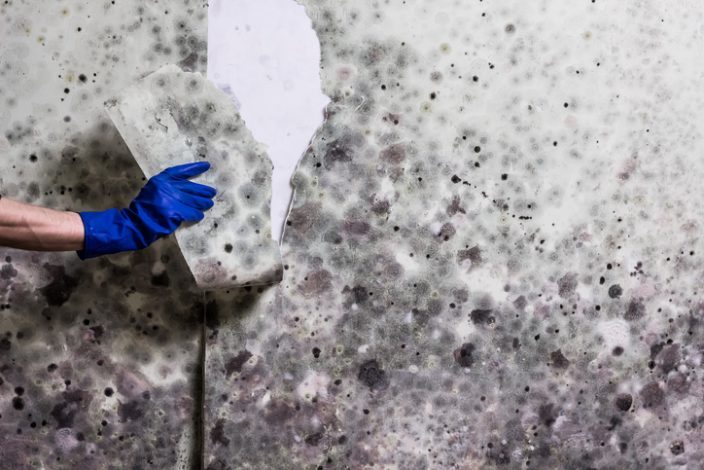Vital Steps After Mold Remediation
Vital Steps After Mold Remediation
Blog Article
Specialist Tips for Message Mold And Mildew Remediation Success
In the realm of mold removal, successfully removing mold is just half the battle; the true difficulty lies in stopping its reappearance. By adhering to expert ideas and finest practices, individuals can protect their rooms against mold and mildew rebirth and maintain a healthy indoor environment.
Display Moisture Degrees On A Regular Basis
After completing mold remediation procedures, keeping ideal moisture degrees is crucial to prevent mold and mildew re-growth and make sure a healthy and balanced indoor setting. High humidity degrees above 60% develop a conducive atmosphere for mold and mildew to thrive, making regular checking a positive action to prevent any future mold and mildew issues.
In addition, developing a routine schedule for moisture checks, especially in high-risk locations such as cooking areas, restrooms, and cellars, is an aggressive technique to mold prevention. By regularly keeping an eye on humidity levels, home owners can effectively alleviate the risk of mold and mildew reoccurrence and maintain a healthy and balanced indoor atmosphere post-remediation.
Conduct Thorough Inspections Post-Remediation
Adhering to the conclusion of mold remediation procedures, it is crucial to conduct comprehensive evaluations to validate the effectiveness of the remediation process. These post-remediation inspections are essential in making certain that the mold and mildew problem has actually been successfully dealt with and that there is no recurrence or staying mold growth. Examinations must be executed by qualified experts who have knowledge in recognizing mold and mildew and evaluating interior air quality.
During these assessments, numerous methods such as visual analyses, air sampling, and surface area sampling might be utilized to extensively assess the remediated locations. Visual evaluations involve a comprehensive assessment of the premises to examine for any visible indicators of mold growth or water damages. Air tasting aids in establishing the airborne mold spore levels, while surface area sampling can detect mold bits on surface areas.
Implement Appropriate Ventilation Methods
After ensuring the efficiency of the mold and mildew remediation procedure with detailed inspections, the following important action is to focus on implementing appropriate ventilation approaches. Ample air flow is essential in preventing mold and mildew reoccurrence by controlling wetness levels and advertising air circulation. To achieve this, it is suggested to use exhaust fans in locations prone to high moisture, such as kitchen areas and bathrooms. In addition, opening up doors and home windows when climate permits can aid improve air movement and reduce moisture buildup. Air dehumidifiers and purifiers are also important tools in maintaining optimum interior air quality.
Proper ventilation not just aids in avoiding mold and mildew development however additionally adds to the general health and convenience of residents. By making certain ample ventilation throughout the home, you can decrease the threat of mold regrowth and develop a much healthier living atmosphere. Normal upkeep of air flow systems, including cleaning and filter replacements, is critical to sustaining reliable ventilation. Consulting with heating and cooling experts can supply more insights into optimizing ventilation approaches for your details residential or commercial property requirements.

Use Mold-Resistant Materials for Repairs
To enhance the this hyperlink long-lasting performance of mold and mildew removal efforts, incorporating mold-resistant materials for repair work is essential in alleviating the danger of future mold and mildew development. Mold-resistant products are designed to hold up against wetness and hinder mold and mildew growth, making them a necessary choice for areas vulnerable to wetness and humidity. When repairing locations affected by mold, making use of products such as mold-resistant drywall, mold-resistant paints, and mold-resistant caulking can aid prevent mold reoccurrence.
Mold-resistant drywall is an exceptional choice to standard drywall in areas like bathrooms and cellars where dampness degrees are higher. This kind of drywall has a special covering that withstands mold growth also when exposed to damp problems. In addition, making use of mold-resistant paints including antimicrobial representatives can additionally prevent mold development on ceilings and walls.
In locations where moisture prevails, such as kitchen areas and washrooms, using mold-resistant caulking around home windows, tubs, and sinks can aid seal out water and protect against mold from taking hold in fractures and crevices. By spending in these mold-resistant products during repair work post-remediation, you can dramatically reduce the possibility of future mold concerns and preserve a healthier indoor atmosphere.
Maintain Cleanliness and Address Water Issues
After mold and mildew remediation, it is critical to keep a clean atmosphere to prevent the regrowth of mold. Leaks, water intrusion, or high humidity degrees can produce the excellent reproduction ground for image source mold, so it is important to repair any type of water-related problems instantly.
To keep sanitation, think about making use of HEPA filters in vacuums and air purifiers to trap mold spores and avoid their blood circulation airborne. Furthermore, making sure correct air flow in areas susceptible to moisture build-up, such as cooking areas and shower rooms, can aid maintain humidity degrees in check. By staying vigilant concerning tidiness and addressing water concerns promptly, you can successfully stop mold and mildew reinfestation and maintain a healthy and balanced interior setting.
Final Thought

In the world of mold and mildew removal, effectively removing mold and mildew is just half the battle; the true challenge lies in preventing its reappearance. After finishing mold and mildew removal procedures, keeping ideal humidity degrees is important to protect against mold re-growth and guarantee a healthy and balanced interior environment. High humidity degrees above 60% produce a favorable atmosphere for mold to flourish, making normal monitoring an aggressive procedure to prevent any kind of future mold and mildew issues.
To improve the long-lasting effectiveness of mold remediation initiatives, integrating mold-resistant products for repairs is essential in reducing the threat of future mold and mildew development. After mold remediation, it is crucial to preserve a clean environment to protect against the regrowth of mold.
Report this page